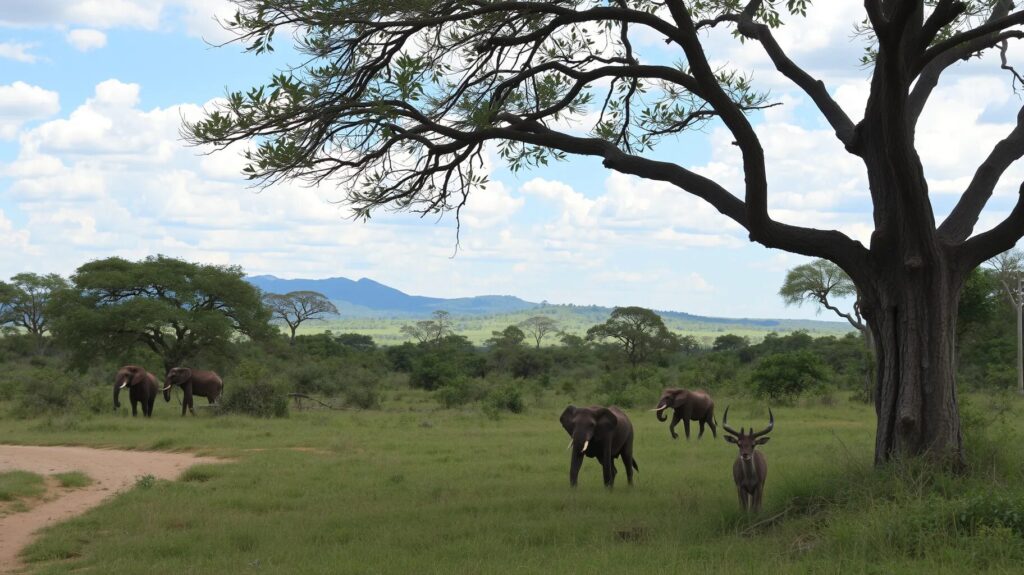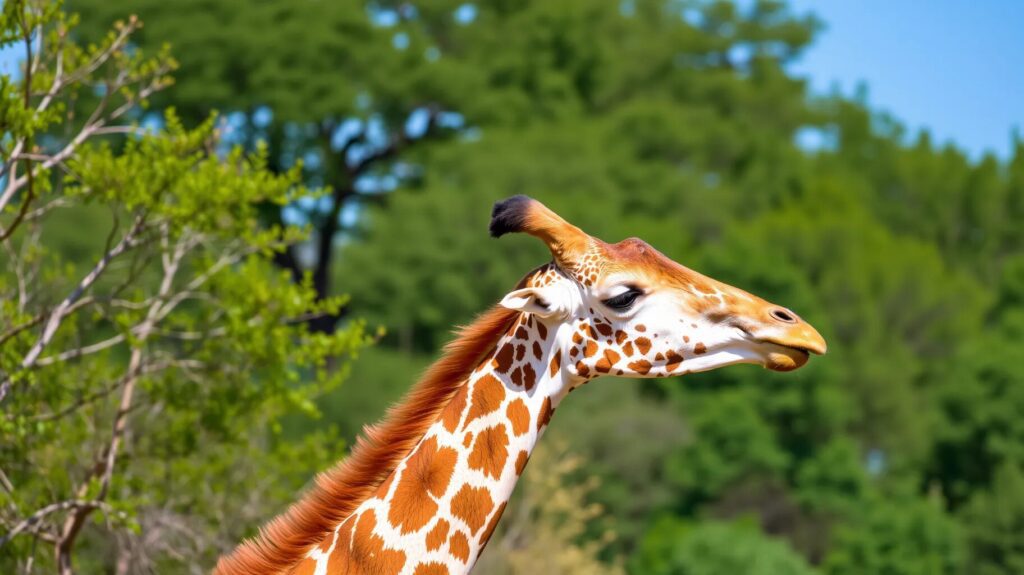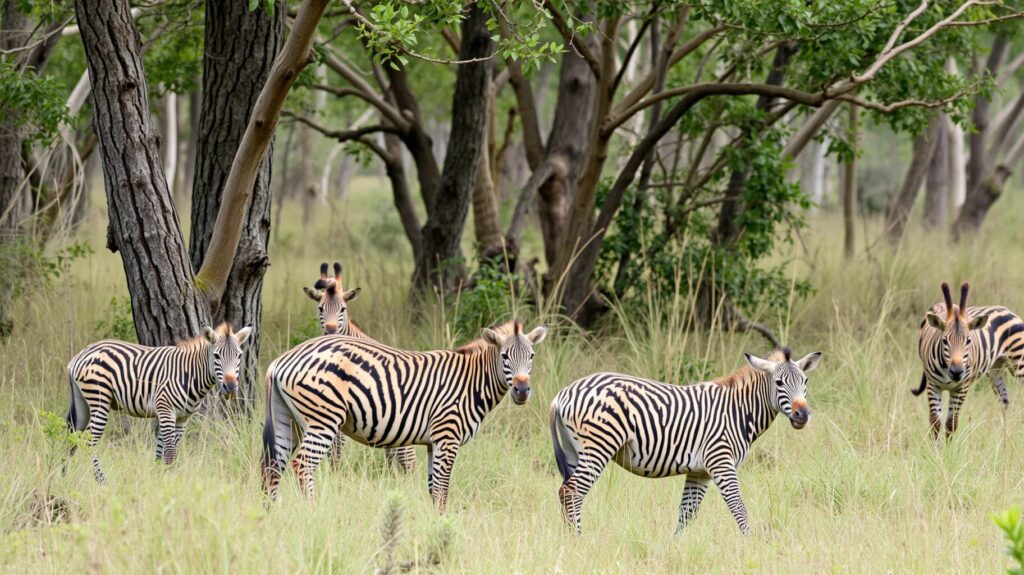
Wildlife conservation has always been a complex task, requiring continuous monitoring, data analysis, and proactive measures to protect the earth’s fragile ecosystems. In recent years, artificial intelligence (AI) has emerged as a game-changer in the world of wildlife conservation, offering powerful tools to monitor animal populations and protect endangered species more efficiently.
AI’s ability to process large data sets, recognize patterns, and predict future trends has drastically improved conservation efforts. From remote sensors to machine learning algorithms, let’s explore how these technological advancements are shaping the future of wildlife conservation.
Smarter Monitoring with Camera Traps
One of the most remarkable contributions of AI in conservation is its ability to analyze the vast amount of data collected by camera traps. Traditionally, researchers had to manually sift through thousands of images, a labor-intensive process prone to human error. With AI, specifically machine learning algorithms, computers can now identify species and individual animals, helping to track their populations automatically.
These AI-powered systems can detect subtle differences in animal appearances, allowing for accurate identification even in poor lighting or obstructed views. This speeds up data analysis and provides real-time insights into animal behavior, habitat use, and movement patterns.
Predicting Species’ Movements and Migration
AI is revolutionizing how scientists predict migration patterns and other behaviors in wildlife. By analyzing historical data, AI can predict where certain species might move based on environmental factors such as climate change, habitat loss, or human activity. This is especially crucial for species that migrate over large distances, like elephants or certain bird species. AI-driven predictions enable conservationists to intervene before animals wander into dangerous zones like poaching hotspots or deforested areas.
AI in Drones for Habitat Monitoring
Another area where AI is making strides is in habitat monitoring. Drones equipped with AI software are being used to survey large areas of forests, grasslands, and wetlands, providing detailed data about vegetation, habitat health, and animal presence. These drones can fly over inaccessible regions and identify signs of illegal logging, human encroachment, or environmental degradation, often in real-time.
By using drones, conservationists can spot problems quickly and take immediate action, such as relocating endangered species or initiating reforestation projects. AI enables drones to process images and videos faster than ever, ensuring accurate assessments of habitats and potential risks.
Identifying and Preventing Poaching Activities
Poaching is one of the greatest threats to endangered species like rhinos, tigers, and elephants. AI is now being deployed in anti-poaching efforts, transforming the way authorities prevent this illegal activity. By using advanced pattern recognition algorithms, AI systems can analyze sensor data, sound recordings, and satellite images to identify suspicious behavior.
In many cases, AI can predict poaching attempts by recognizing patterns in movement and behavior around protected areas. Rangers can then be alerted in real-time, allowing them to intercept poachers before they strike. AI has thus become a critical ally in the fight against illegal wildlife trade.
Acoustic Monitoring and AI in Ocean Conservation
The use of AI is not limited to land; it’s also playing a crucial role in marine conservation. Acoustic monitoring, for instance, allows scientists to listen for specific sounds in the ocean, such as whale calls or dolphin clicks. AI algorithms analyze these recordings, helping researchers estimate population sizes and track migration routes.
In addition to monitoring, AI is used to detect threats like illegal fishing vessels, underwater noise pollution, or declining coral reefs. This data informs targeted conservation actions, from creating marine protected areas to regulating ship traffic in sensitive zones.
AI for Climate Resilience in Biodiversity

Climate change poses an ever-growing threat to biodiversity, but AI helps conservationists understand how rising temperatures and changing weather patterns affect ecosystems. By analyzing vast datasets from weather patterns, soil samples, and species distribution, AI can forecast future biodiversity risks. This allows conservationists to implement strategies to protect vulnerable species from habitat loss, invasive species, and other climate-induced challenges.
Predictive models driven by AI also inform the development of climate-resilient ecosystems, where species are better equipped to withstand changing environmental conditions. This might include breeding programs for species suited to hotter climates or reforestation efforts using heat-tolerant tree species.
Enhancing Genetic Research with AI
AI is also helping scientists better understand genetic diversity, a crucial factor in the survival of endangered species. AI-powered tools can analyze genetic data faster than traditional methods, helping researchers identify individuals that carry key genes for traits like disease resistance or adaptability to environmental changes. This is particularly important in captive breeding programs, where genetic diversity is critical to maintaining healthy populations.
By analyzing genetic information, AI can also prevent inbreeding in small populations, ensuring long-term survival. This data can inform breeding programs designed to strengthen species before reintroducing them into the wild.
AI and Citizen Science Collaboration
AI is also engaging everyday citizens in conservation efforts. Through apps and online platforms, citizen scientists can upload pictures, sounds, and GPS data related to wildlife. AI processes this data, helping to track animal populations and assess environmental health. This collective effort enhances conservation data collection at an unprecedented scale, providing real-time updates and increasing global engagement with biodiversity issues.
Supporting Wildlife Rehabilitation with AI

In wildlife rehabilitation centers, AI is now being used to monitor the health of rescued animals. Computer vision and AI algorithms can detect subtle changes in an animal’s behavior, movement, or even facial expressions, signaling distress or illness. This allows for early intervention, improving the chances of survival for injured or endangered species.
These AI systems can also track how animals are responding to treatment or rehabilitation programs, ensuring that they are in the best possible condition before being released back into the wild.
Advancements in AI for Wildlife Conservation and Biodiversity (Part 2)
As we continue exploring the intersection of AI and wildlife conservation, it becomes clear that this technology is reshaping how we protect endangered species and ecosystems. In the first part, we touched on AI-powered monitoring, habitat protection, and anti-poaching efforts. Now, let’s dig even deeper into how AI is making a lasting impact on conservation efforts around the globe.
Creating Wildlife Corridors with AI
One of the significant challenges wildlife faces today is habitat fragmentation. As human development expands, animals often find themselves trapped in small, isolated patches of habitat. This not only limits their ability to roam and find food but also reduces genetic diversity, making populations more vulnerable to extinction.
AI helps conservationists design wildlife corridors, which are stretches of natural habitat connecting different wildlife populations. By analyzing land use, animal migration patterns, and environmental data, AI can suggest optimal locations for these corridors. This ensures that animals have safe passage between fragmented habitats, promoting genetic diversity and reducing the risk of human-wildlife conflict.
AI for Species Reintroduction Programs
Species reintroduction programs, which aim to reintroduce animals into areas where they have been previously extinct, are critical for biodiversity recovery. However, these programs are complex and require careful planning to ensure success. AI is now playing a central role in these initiatives, from selecting the best release sites to monitoring post-release survival.
By analyzing vast amounts of environmental data, AI helps identify the most suitable habitats for species reintroduction, considering factors such as food availability, predator presence, and human activities. After animals are released, AI-powered drones and camera traps continue to monitor their movements and health, ensuring that they are adapting well to their new environment.
Optimizing Resources for Conservation Projects
In many parts of the world, conservation efforts are limited by a lack of resources—whether it’s funding, manpower, or time. AI helps optimize these resources by identifying the most critical areas for intervention. Through predictive modeling and data analysis, AI can highlight the regions or species most in need of protection, allowing conservationists to focus their efforts where they will have the greatest impact.
For example, AI can predict which species are at the highest risk of extinction based on environmental and genetic data. This ensures that resources are directed toward saving those species before it’s too late. Similarly, AI helps in deciding where to allocate funding, whether it’s for anti-poaching initiatives, habitat restoration, or species reintroduction.
AI in Combatting Invasive Species
Invasive species pose a significant threat to biodiversity by outcompeting native species for resources and disrupting local ecosystems. AI is now being used to identify, track, and manage invasive species more effectively. Machine learning algorithms analyze satellite images, environmental data, and even social media reports to locate invasive species’ hotspots.
Once identified, AI helps conservationists develop strategies to control the spread of these species, whether through direct removal, habitat restoration, or public awareness campaigns. This is particularly important in island ecosystems, where invasive species can have devastating effects on native wildlife.
AI for Climate-Driven Conservation
As climate change continues to alter ecosystems around the world, conservationists are turning to AI to predict how wildlife will be impacted. By analyzing climate models and historical data, AI can forecast which species are most vulnerable to climate-related changes and what conservation actions are needed to protect them.
This includes identifying regions where habitats are likely to disappear due to rising temperatures, allowing conservationists to implement proactive measures such as habitat restoration or the creation of climate-resilient ecosystems. In some cases, AI has even suggested relocating entire species to areas where they have a better chance of survival under new climate conditions.
Strengthening Conservation Networks with AI
One of the most exciting developments in AI for wildlife conservation is its ability to bring together diverse stakeholders, from local communities to international organizations. AI-powered platforms enable real-time collaboration between conservationists, researchers, governments, and even private companies.
For instance, AI can help governments and NGOs coordinate their efforts by sharing real-time data on wildlife populations, illegal activities, or habitat health. This increases transparency and ensures that everyone involved is working towards the same conservation goals, preventing the duplication of efforts and maximizing impact.
Reducing Human-Wildlife Conflicts
As human populations expand, wildlife often comes into conflict with communities, particularly in areas near natural reserves. AI is now being used to predict and prevent these conflicts before they happen. For example, by analyzing animal movement patterns, AI can alert farmers when elephants are approaching their crops, allowing them to take protective measures.
Similarly, AI-powered systems can help predict where carnivores like lions or tigers are likely to roam, reducing the risk of attacks on livestock or people. By reducing these conflicts, AI is helping to promote peaceful coexistence between humans and wildlife, a critical component of long-term conservation success.
AI-Assisted Policy Making
AI is also being utilized to assist policymakers in making more informed decisions about biodiversity conservation. By analyzing ecological, social, and economic data, AI can provide recommendations on where to focus conservation efforts, how to design protected areas, or which species should be prioritized for protection.
These insights allow policymakers to create more effective, data-driven conservation policies that are tailored to the unique needs of specific regions or ecosystems. This not only improves the chances of success for conservation initiatives but also ensures that limited resources are used in the most impactful way possible.
The Future of AI in Conservation
The future of wildlife conservation is undeniably intertwined with advancements in AI technology. As AI continues to evolve, we can expect even more sophisticated tools to emerge, from AI-powered robots that monitor endangered species to advanced data analysis platforms that predict ecosystem changes decades in advance.
However, the success of AI in conservation will depend on its ability to integrate with on-the-ground efforts. AI is a tool—not a replacement for human expertise, passion, and commitment to preserving biodiversity. The key to future success lies in using AI to complement the work of conservationists, empowering them to protect our planet’s most vulnerable species and ecosystems.
AI has already proven itself as a powerful ally in the fight to preserve biodiversity, but its potential is far from exhausted. As we move forward, it’s exciting to imagine what new possibilities AI will unlock, ensuring that future generations inherit a world rich in wildlife and natural beauty.
Resources
Research and Articles on AI in Wildlife Conservation:
- Conservation International – AI for Earth:
A program that explores how AI tools are helping to monitor biodiversity, protect habitats, and combat climate change.
Visit the website - National Geographic – How AI is Saving Endangered Species:
This article provides a deep dive into how AI is being applied to monitor species, identify poaching threats, and track animal migration.
Read the article - WWF (World Wildlife Fund) – Wildlife Crime Technology Project:
Learn about how AI and technology are used to combat poaching and other illegal wildlife activities.
Learn more here
Organizations Using AI for Conservation:
- Google AI for Social Good:
Google’s AI platform works on several wildlife conservation projects, including predicting deforestation and tracking endangered species.
Google AI for Social Good - Microsoft AI for Earth:
This initiative provides grants and access to cloud computing and AI tools for organizations working on environmental conservation.
Microsoft AI for Earth - Wild Me – AI-Powered Wildlife Monitoring:
Wild Me uses AI to analyze images of animals from the wild, helping researchers track species with unique markings like whale tails or leopard spots.
Wild Me
Tools and Platforms:
- Wildbook:
An open-source platform that uses AI to help track and identify individual animals in photos, allowing conservationists to better understand wildlife populations.
Wildbook - EarthRanger:
A software platform that aggregates and visualizes data from GPS collars, camera traps, and other sensors to monitor wildlife in real-time.
EarthRanger - iNaturalist:
A citizen science platform where users can upload photos of wildlife. AI is used to help identify species and provide valuable data for conservationists.
iNaturalist
Academic Papers:
- AI for Biodiversity Monitoring:
An academic paper by Google Research on the applications of AI in biodiversity monitoring and species recognition.
Google Scholar Paper - The Role of AI in Monitoring Endangered Species:
A comprehensive study discussing how AI technologies, including drones and camera traps, have revolutionized species monitoring.
Available through Nature Communications or other academic databases.





